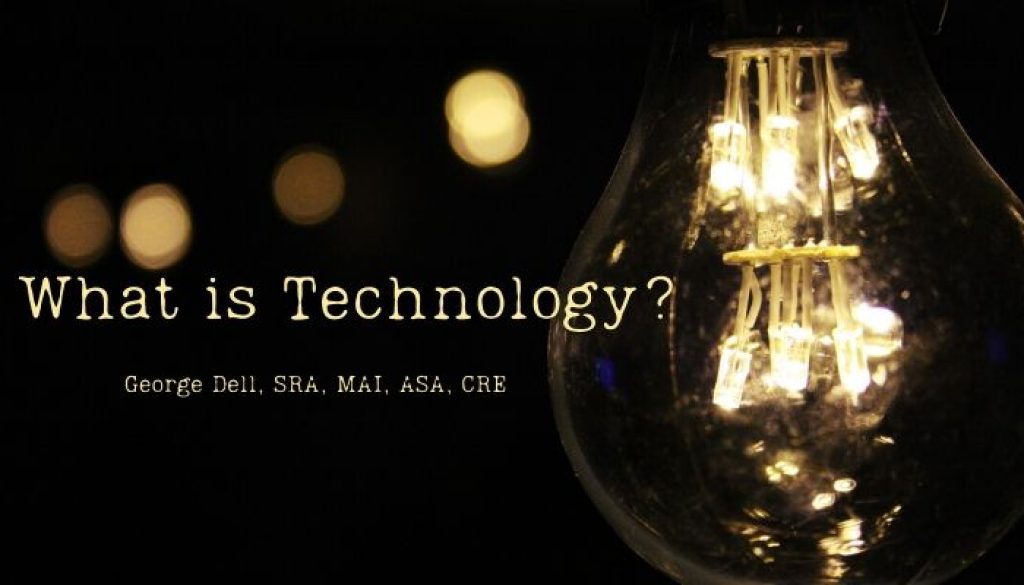We hear the word “technology” thrown around a lot. It’s a scare word. It gets attention. But what is it, and how does it affect our risk information industry?
Technology can be defined as all the techniques, skills, methods, and processes used to produce a good or service or accomplish an objective, such as scientific investigation. (There is that word “science” again – an orderly method of investigation.) Most involve a system of some sort.
For this blog, let’s look at what is our good or service, and what are the two types of technology that accomplish that good or service. And how do we think about the word “technology” when someone throws it at us?
The first Dell rule of critical response is to look at who is voicing the word. And what is their motive? Generally, someone is selling or convincing us of something. So, the next question is: What is this person selling me?
The next most important question, especially for appraisers, valuers, and asset analysts.: Is this a technique, skill, method, or process I must buy, or is it something where I add value. Are they providing me a technology where I am the consumer, or a technology where I am the provider of needed service?
There are two types of technology: product technology, and process technology. One makes me a consumer. The other makes me a smarter provider.
So – the service we provide is of three types: minimize collateral risk, maximize investment, or manage equity. A critical part is always risk – what is the probability of the loss, gain, or fairness?
Product technologies are easy to identify. Examples include hardware, measurement devices, pre-scripted software (especially analysis/forms software). Process technologies today tend to be focused on data. A stream of data.
The appraisal industry is a process industry, and the appraisal process is a process technology. It has shifted from gathering difficult sparse data, to plentiful instant data. What the analyst does is to modify and enhance the data stream. Turn the data into useful information into better risk decision-making.
What we are often sold is magical. Just buy our software. Just fill in this form or spreadsheet. Just copy over this table from the internet. And a magic check will come. This mindset is losing ground.
The image of appraisal as a “product” that can be bought and sold as a software package and generated by filling out forms is being replaced. The image of appraisal as a “process” that includes the use of modern tools by a skilled analyst applying critical thinking and skilled data refinement — performs a value-added function.
As we move into a future with more and more big data, appraisers must develop and apply new data refinement skills and critical reasoning. This, to identify the appropriate data, determine the best algorithms, and then communicate these processes and their results to clients in an informed way. The evolution of big data creates the opportunity and the necessity for appraisers to develop data analysis methodologies leading to reproducible, rather than simply “credible” “believable” or “worthy” work.
So, ask just one question: Are they helping us be better providers of an improved data stream, or are they just selling us magical regression? Are we buying a canned inflexible algorithm? Or are we learning to model, to provide a better value-added data stream?
One makes me smarter. The other makes me dull and replaceable. What’s my choice?
